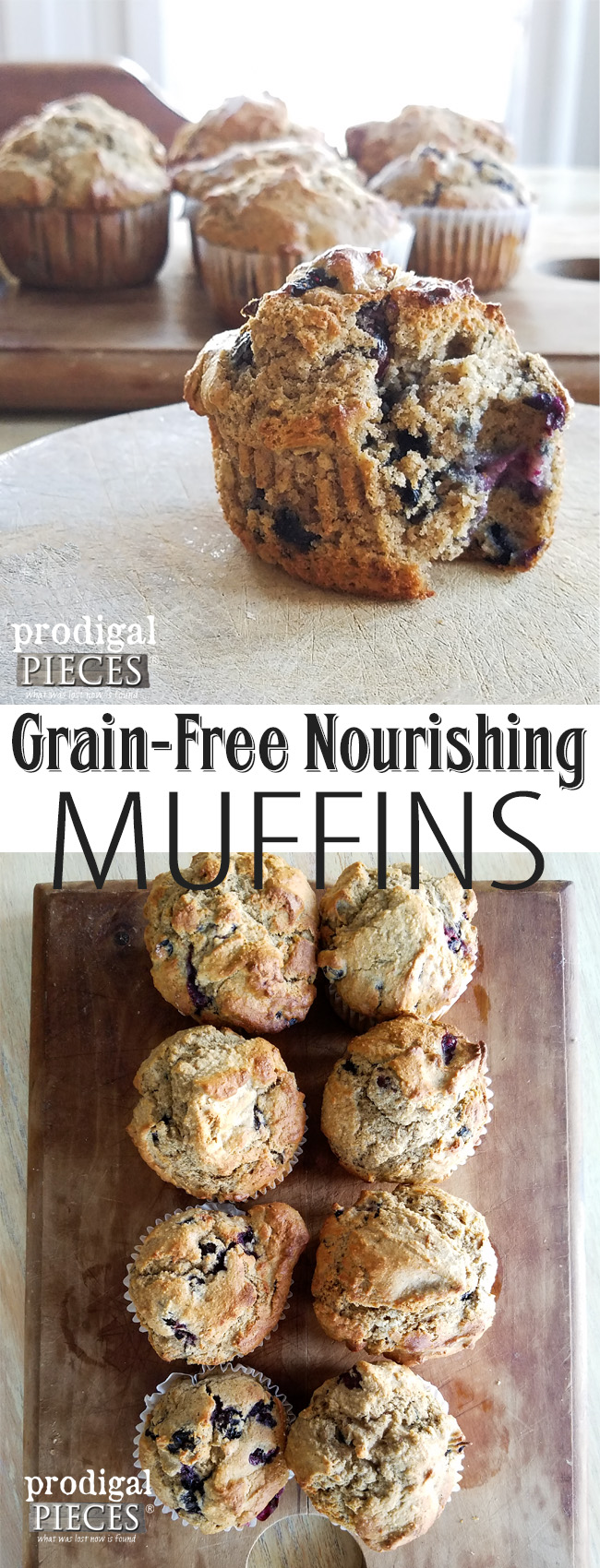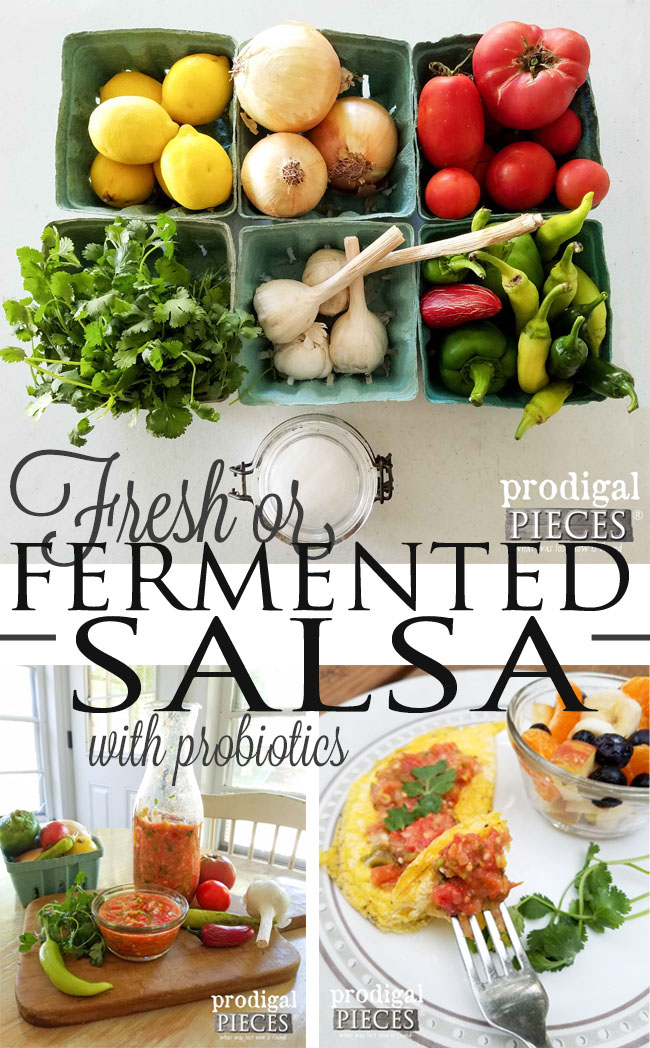Summer offers garden goodness and one of my all-time favorites are pickles. If you eat the typical store-bought canned dill pickles or any canned pickle for that matter, you are completely missing out in more ways than one.
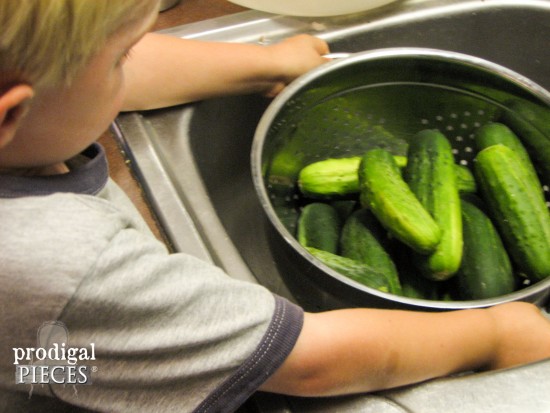
A LITTLE HISTORY
Fermented, or cultured foods, are an integral part to the human diet, and most do not understand how our bodies need them. Not only is our gut is our second brain, and eating fermented foods nourishes it to the full, but we are also creating an awesome mini-system that fuels our bodies giving it what it needs to battle diseases and toxins. Check out Mother Earth News (Aug.-Sept. 2013) for an excellent article. (see below for more resources)
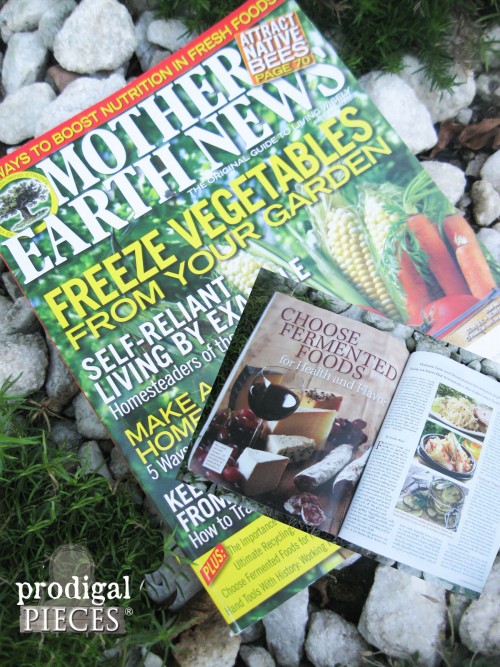
My family is not what you would call your average grocery consumer. However, we are whole food, real food, get-it-while-its-fresh food eaters making the most of every bite. Now, I will say that we deviate from time to time, but for the most part, we avoid processed foods.
Likewise, we make our own ketchup, mustard, hot sauce, cortido (Latin sauerkraut), yogurt, buttermilk, crème fraiche, salsa, kefir....all fermented.
So, of course, we ferment our dill pickles, like the olden days...in crock, with a salt-water brine, just bubbling with goodness. My kids salivate just waiting for them to be done. What better healthy snack can I provide for them than a crisp, juicy, full-of-fermentation goodness dill pickle?
Want to make your own? Here's how.
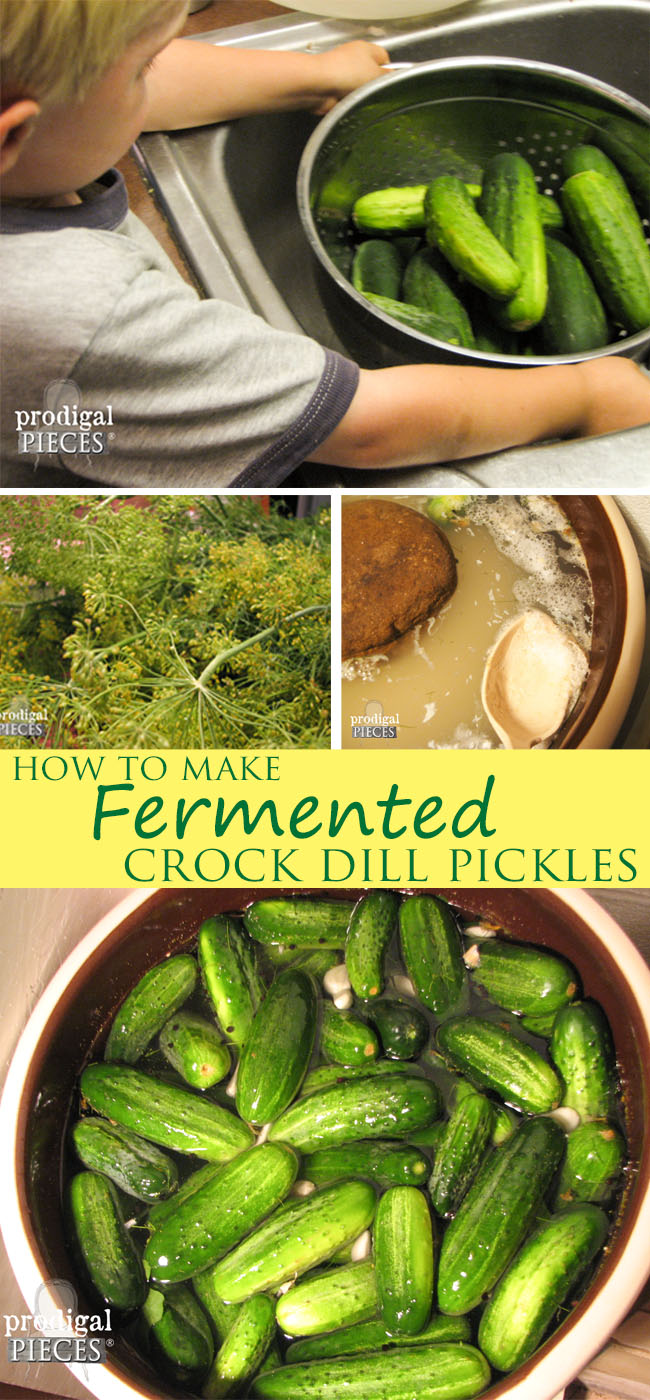
You'll need: (this is for a 1 gallon recipe. I use a 10 gallon crock...I have a family of 8 and we like to eat them all year)
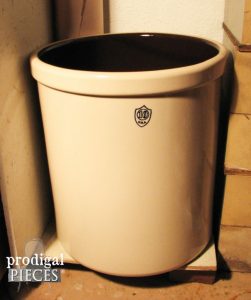
- 1 gallon crock or food-grade bucket, cleaned
- plate to fit inside crock or bucket, cleaned
- 6T. sea salt (3/8c.)
- 3-4 fresh dill flowering heads (you can use dried, 3
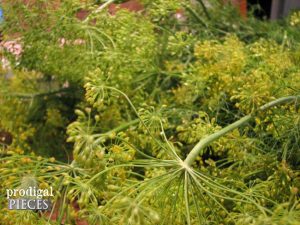 -4t., but fresh is best)
-4t., but fresh is best)
- handful of oak, grape, or cherry leaves (Yes, leaves. They make the pickles crisp!)
- 2-3 heads of garlic, not cloves, peeled
- a pinch of peppercorns
- 3-4lbs. unwaxed cucumbers (small pickle size)
- Large rock or weight, cleaned
LET'S MAKE DILL PICKLES
First, wash the pickles, and remove any blossoms being careful not to bruise them. If you can't get fresh ones, just soak the ones you have in some ice-cold water to freshen them up. Then, place them in the crock along with the dill, leaves, garlic, and peppercorns.
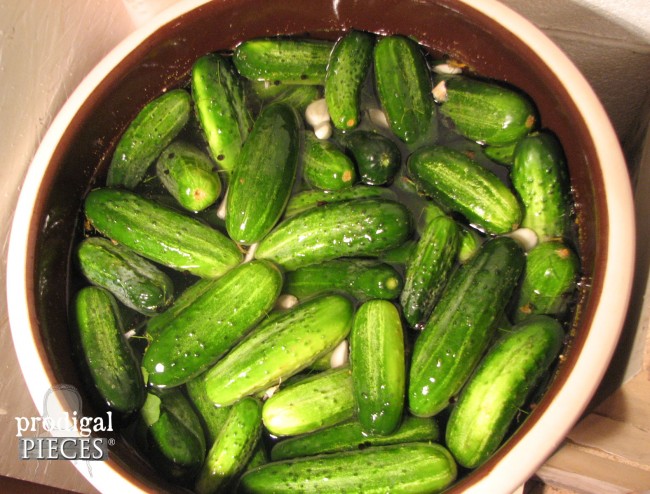
Next, dissolve the sea salt in half a gallon of water and pour it into the crock.
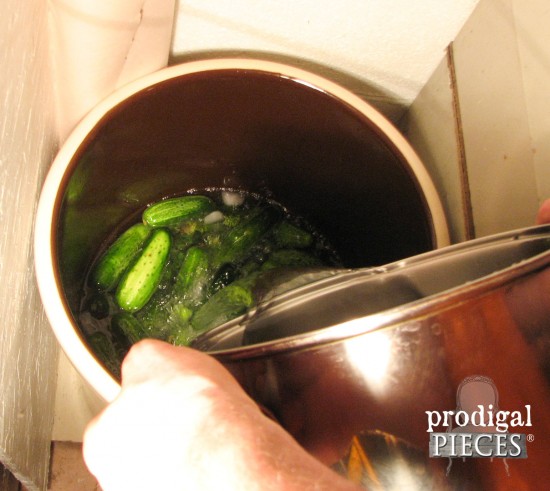
Now, the pickles will float and you want them submerged. Here's where the plate comes in. Turn your plate upside down and push the pickles under the brine, making sure to catch them all. Place your large (clean) rock on top of the plate to keep the pickles submerged.
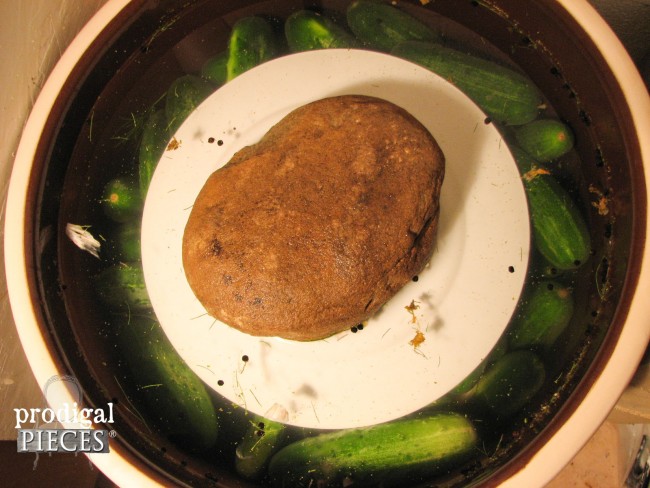
Last, place a towel over top for a tent to keep the pesky flies and gnats out.
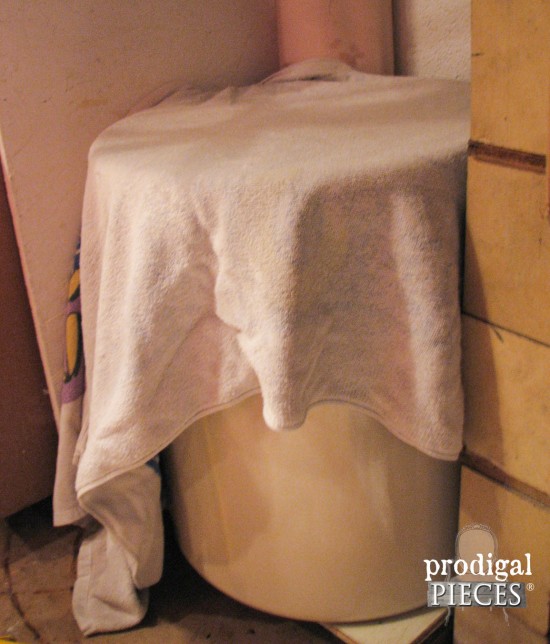
Also, you'll need to check the pickles daily to see if there is any mold on the surface. However, don't panic, just skim it off and wash the plate and rock (or weight) and replace them - mold is good.
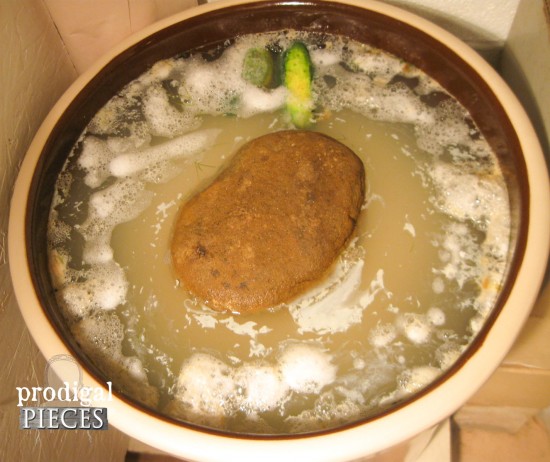
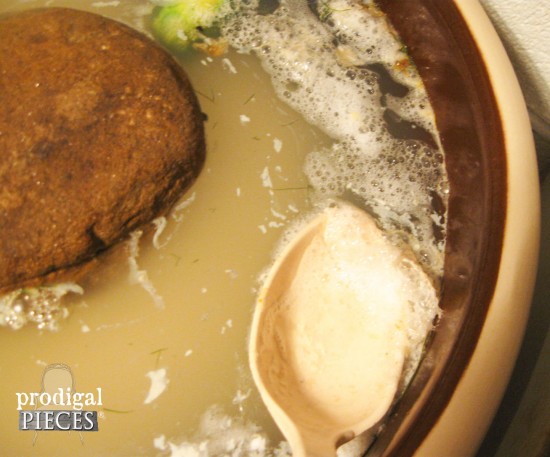
Do the same the next day, and so on. In conclusion, after about a week, grab a pickle and give it a taste. In addition, you can stop the fermenting whenever you like the flavor. My 10 gallon crock takes around 4 weeks to get it where I like it. A one gallon crock takes anywhere from 1-4 weeks.
YUMMY
Once you think they've pickled to your liking, just store them in a refrigerator for months. How easy was that?!
Any questions? Please feel free to ask!
Additional resources:
In addition, more recipes like my fermented dill pickles:

 My family is not what you would call your average grocery consumer. However, we are whole food, real food, get-it-while-its-fresh food eaters making the most of every bite. Now, I will say that we deviate from time to time, but for the most part, we avoid processed foods.
Likewise, we make our own ketchup, mustard, hot sauce, cortido (Latin sauerkraut), yogurt, buttermilk, crème fraiche, salsa, kefir....all fermented.
So, of course, we ferment our dill pickles, like the olden days...in crock, with a salt-water brine, just bubbling with goodness. My kids salivate just waiting for them to be done. What better healthy snack can I provide for them than a crisp, juicy, full-of-fermentation goodness dill pickle?
Want to make your own? Here's how.
My family is not what you would call your average grocery consumer. However, we are whole food, real food, get-it-while-its-fresh food eaters making the most of every bite. Now, I will say that we deviate from time to time, but for the most part, we avoid processed foods.
Likewise, we make our own ketchup, mustard, hot sauce, cortido (Latin sauerkraut), yogurt, buttermilk, crème fraiche, salsa, kefir....all fermented.
So, of course, we ferment our dill pickles, like the olden days...in crock, with a salt-water brine, just bubbling with goodness. My kids salivate just waiting for them to be done. What better healthy snack can I provide for them than a crisp, juicy, full-of-fermentation goodness dill pickle?
Want to make your own? Here's how.
 You'll need: (this is for a 1 gallon recipe. I use a 10 gallon crock...I have a family of 8 and we like to eat them all year)
You'll need: (this is for a 1 gallon recipe. I use a 10 gallon crock...I have a family of 8 and we like to eat them all year)
 -4t., but fresh is best)
-4t., but fresh is best) Next, dissolve the sea salt in half a gallon of water and pour it into the crock.
Next, dissolve the sea salt in half a gallon of water and pour it into the crock.
 Now, the pickles will float and you want them submerged. Here's where the plate comes in. Turn your plate upside down and push the pickles under the brine, making sure to catch them all. Place your large (clean) rock on top of the plate to keep the pickles submerged.
Now, the pickles will float and you want them submerged. Here's where the plate comes in. Turn your plate upside down and push the pickles under the brine, making sure to catch them all. Place your large (clean) rock on top of the plate to keep the pickles submerged.
 Last, place a towel over top for a tent to keep the pesky flies and gnats out.
Last, place a towel over top for a tent to keep the pesky flies and gnats out.
 Also, you'll need to check the pickles daily to see if there is any mold on the surface. However, don't panic, just skim it off and wash the plate and rock (or weight) and replace them - mold is good.
Also, you'll need to check the pickles daily to see if there is any mold on the surface. However, don't panic, just skim it off and wash the plate and rock (or weight) and replace them - mold is good.

 Do the same the next day, and so on. In conclusion, after about a week, grab a pickle and give it a taste. In addition, you can stop the fermenting whenever you like the flavor. My 10 gallon crock takes around 4 weeks to get it where I like it. A one gallon crock takes anywhere from 1-4 weeks.
Do the same the next day, and so on. In conclusion, after about a week, grab a pickle and give it a taste. In addition, you can stop the fermenting whenever you like the flavor. My 10 gallon crock takes around 4 weeks to get it where I like it. A one gallon crock takes anywhere from 1-4 weeks.


